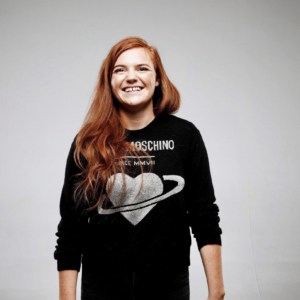Collaboration and authentic partnerships
As the industry matures brands need to make smarter decisions in order to find authentic partnerships. Data can play a huge role in this so it is important before working with any creator to understand some basic stats on their demographics, such as age, location and interest.
Once you have obtained such data it is important to ask yourself if this influencer is the right fit for your brand. I.e would they talk about you, or your offer, organically? Before working with influencers make sure to look at their previous collaborations, look at who they have worked with, and the engagement and comments on branded content. An example of this is the work that TopCashback have done with Rachel Riley recently; she’d already talked about us in the past as she has been a genuine member for the past five years so she was the perfect fit for our brand. You can read a Q&A on this campaign on PerformanceIN.
Fraud
It’s no secret that fraud is a hot topic and huge problem in influencer marketing. Two common problems brands and influencers are facing include:
- Influencers are buying fake followers and engagement – a recent study by Points North Group found that up to 78% of followers were fake across some sponsored posts.
- When chatting to influencers one major concern they have is around bots – right now there is nothing that they can do other than making their account private to stop bots from following them and there is a concern that if an advertiser sees a number of bots engaging with their account, they may not work with them.
Brands are getting smarter when it comes to fake followers however fraudulent parties seem to be one step ahead; even Instagram can’t always notice what is real and what isn’t and whilst there was a huge part of accounts just this past weekend, many are still slipping through the net.
As more brands measure on a CPE (cost per engagement) basis fake engagements are rising too as you can buy fake likes for as little as $2 per 1000 likes. As spends on influencer marketing continue to grow brands should be analysing such data. Many free tools such as Social Blade are readily available for tackling follower fraud, while fake engagement can be spotted with a little due diligence on posts. Alternatively, paid tools and agencies can provide extensive background checks on influencers and there are new players entering this market regularly; Manchester-based Social Chain recently launched LikeWise at the start of October and if their claims are true then this could really have a big impact.
Measuring success
It’s important to understand when you’re launching or managing an influencer marketing campaign what exactly success looks like for you and what you want to achieve from your campaign; this will help you understand what metrics you will use to track its effectiveness.
At TopCashback we’ve always been very data-oriented and unlike a lot of other influencer campaigns out there we measure success based on both the volume and quality of the customers we get through the channel; this is not only measured against each individual influencer but also every single sponsored post and story. This means we measure clicks, signups, active customers and can even go as far down the funnel as seeing exactly what kind of advertisers the customers have shopped with or interacted with – data like this can be really valuable when planning future campaigns.
We have our own tracking system to help us with the measurement this but a lot of it can be done with normal affiliate links. Other ways of tracking include discount codes, shoppable content and google analytics links.
It is important to review impressions and engagement numbers too, this is helpful for building strategy on when to post and which content is being favoured. By tagging branded content with Instagram you are to see these insights, alternatively, influencers can access this themselves.
Industry trends
Instagram is a radially changing platform. Just a few of the changes made this year include:
- Shoppable story content – allowing advertisers with products to connect their product catalogue to Facebook/Instagram and link directly to their products.
- IGTV is Instagram’s huge product release where they are going directly after YouTube and allowing creators to make longer vertical content available. It’s still very early days but I would expect Instagram to continue to really push this product and start to bring over some influencers from other video platforms.
- Sharing Feed posts in stories- allowing users to share post content into stories.
- The question sticker – allowing influencers and brands to directly interact with their audience in a whole new way, encouraging even more engagement on stories.
It is important for brands to stay up to date with algorithm changes and shifts in behaviour. This year we have seen a huge shift from traffic coming from content on the newsfeed to traffic from stories, with stories set to outweigh newsfeed content within two years. By measuring this and using data to determine how people are viewing our content we are able to develop our strategy and maximise ROI.

